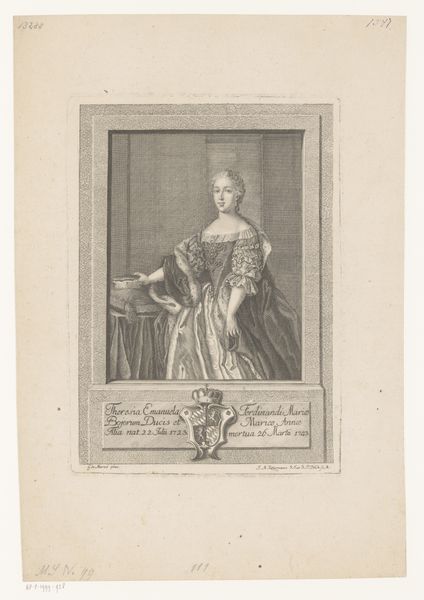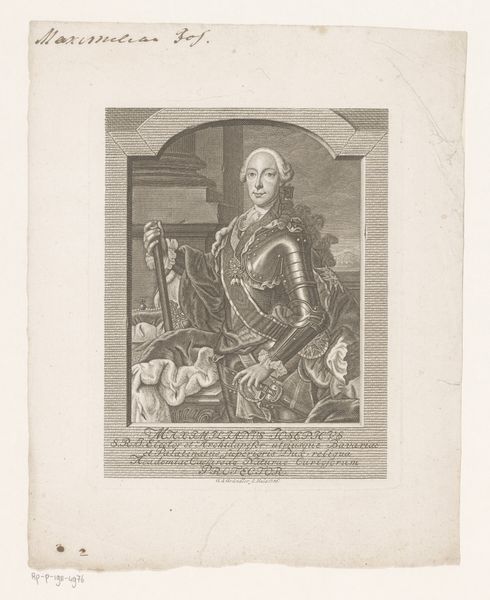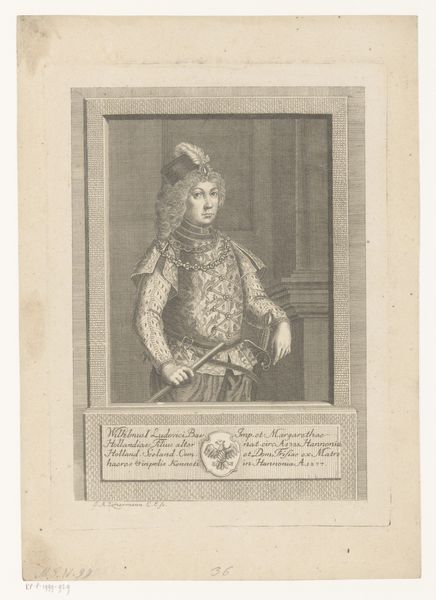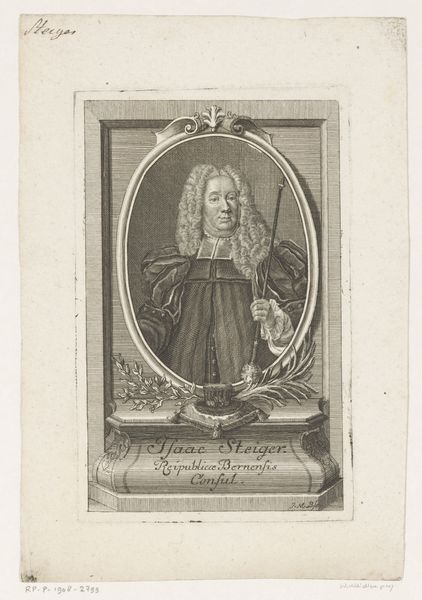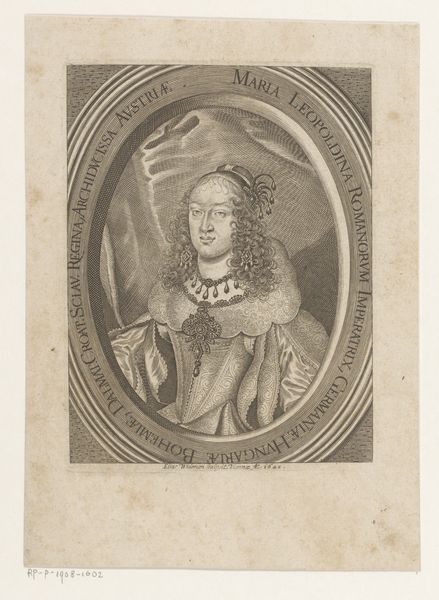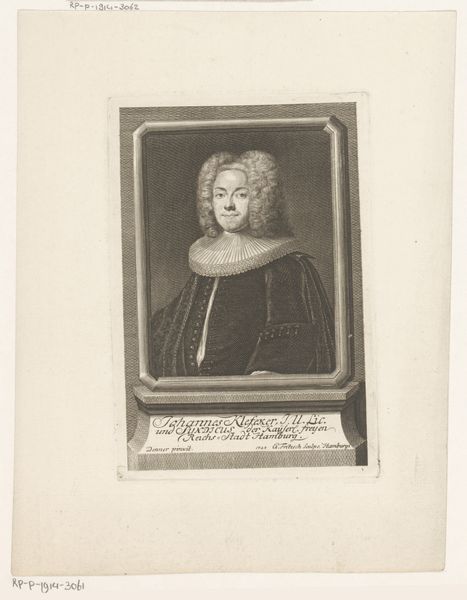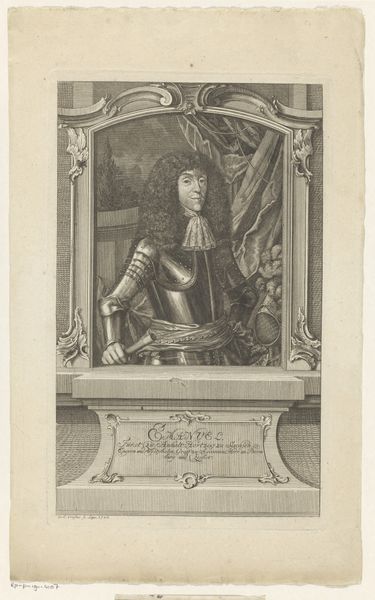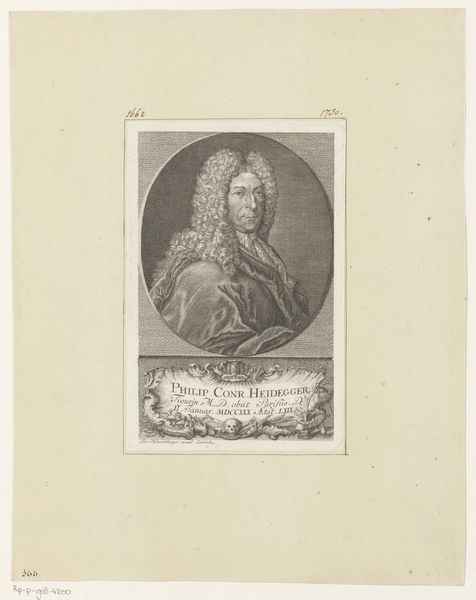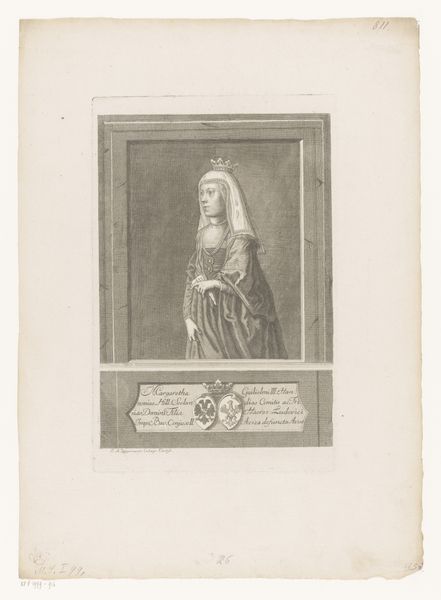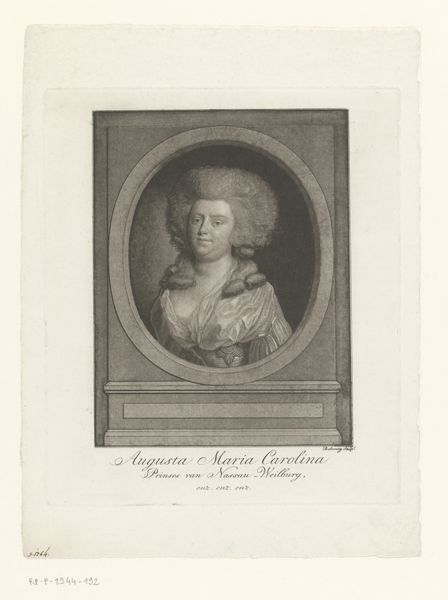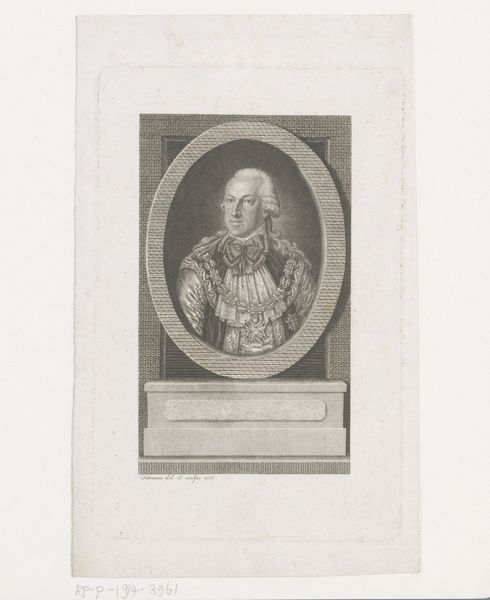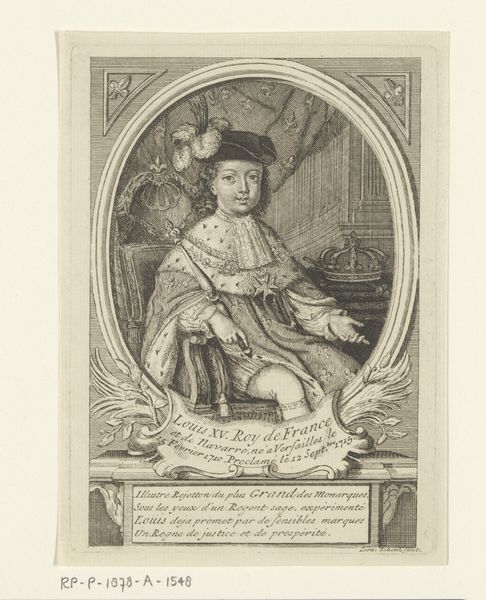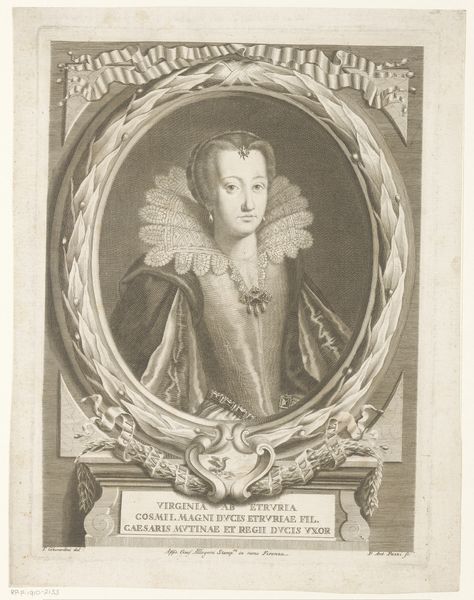
Dimensions: height 280 mm, width 202 mm
Copyright: Rijks Museum: Open Domain
Curator: The work before us is a print titled "Portret van Elisabeth van Hongarije," created in 1773 by Joseph Anton Zimmermann. Editor: My initial impression is one of stark formality; the crisp lines of the engraving emphasize the controlled posture of the subject and lend a rather restrained elegance to the overall composition. Curator: As a historical portrait, it reflects the tradition of memorializing prominent figures—in this case, likely Elisabeth, a member of Hungarian royalty, though additional context might be needed to interpret the family crest detailed at the base of the print. Prints, specifically engravings like this, democratized image ownership and dissemination across social classes during the era. Editor: True, but I am captivated by the way Zimmermann used engraving—the linear precision! Think about the labor invested to carve the lines into a metal plate! It elevates the printed reproduction. It is also worthwhile considering paper quality during this period and how this material was regarded. Curator: Engravings served various roles—commemorating royal lineages, circulating images of political figures, disseminating popular trends... Zimmermann's decision to utilize a crisp style also could convey an aura of respect and timelessness befitting its historical importance. Editor: Beyond representation, the materiality carries significance. Considering the tools Zimmermann employed – burins, scrapers, polishing stones, all playing a part in constructing the final image. It shifts the dialogue towards human agency embedded within object making. Curator: Definitely. Dissemination was so central to public memory. And for many individuals unable to see originals firsthand, this was key to seeing great artworks or people in different countries, to shape one’s world view. Editor: So ultimately, is this piece only about history, or is it simultaneously an embodiment of materiality—paper, ink, meticulous craftsmanship? Does not Zimmermann subtly weave art with artisan work through material constraints and methods? Curator: Perhaps its power rests precisely there, a convergence where individual representation fuses within wider networks related to production, reproduction, as well as historical identity-making practices and politics during the 18th century. Editor: Yes, it speaks to the confluence of factors—materials, processes, social settings—all working in concert within Zimmermann's craft.
Comments
No comments
Be the first to comment and join the conversation on the ultimate creative platform.
